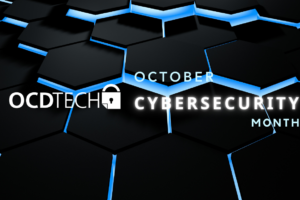According to data from 2023, human error contributed to over 80% of data breaches and cyber attacks. This underscores the critical importance of educating and training employees to recognize and mitigate security risks effectively. In this article, we’ll delve into the essentials of creating a robust cybersecurity training program for employees, equipping your workforce with the knowledge and skills needed to defend against evolving cyber threats.
Understanding the Human Factor in Cybersecurity
Before delving into the specifics of cybersecurity training, it’s essential to grasp why the human factor is so crucial. Despite advancements in technology, human error, negligence, and lack of awareness continue to expose organizations to significant cyber risks. Whether it’s falling victim to phishing scams, using weak passwords, or inadvertently disclosing sensitive information, employees play a pivotal role in either fortifying or compromising an organization’s cybersecurity posture.
Key Components of a Cybersecurity Training Program
- Risk Awareness Training: Begin by educating employees about the various cybersecurity risks they may encounter, such as phishing attacks, malware infections, and social engineering tactics. Illustrate real-life examples and demonstrate how these threats can impact both individuals and the organization as a whole.
- Best Practices for Data Protection: Train employees on best practices for data protection, including the importance of strong passwords, secure file sharing methods, and data encryption techniques. Encourage the adoption of multi-factor authentication and password managers to enhance security.
- Recognizing Phishing Attempts: Since phishing remains one of the most common attack vectors, provide comprehensive training on how to identify and report phishing emails. Teach employees to scrutinize email sender addresses, look for grammatical errors or inconsistencies, and avoid clicking on suspicious links or attachments.
- Secure Remote Work Practices: With the rise of remote work, it’s imperative to educate employees on secure remote work practices. Emphasize the use of virtual private networks (VPNs), secure Wi-Fi connections, and the importance of keeping software and devices updated to patch vulnerabilities.
- Incident Response Training: Prepare employees to respond effectively to security incidents by providing clear guidelines and procedures. Conduct regular simulations or tabletop exercises to simulate cyber attack scenarios and assess employees’ ability to identify, contain, and report security incidents promptly.
- Continuous Education and Reinforcement: Cyber threats are constantly evolving, so ongoing education and reinforcement are essential. Provide regular updates, refresher courses, and resources to keep employees informed about the latest cybersecurity trends, threats, and best practices.
Measuring Effectiveness
To ensure the effectiveness of your cybersecurity training program, establish key performance indicators (KPIs) and metrics to measure its impact. Track metrics such as the number of reported security incidents, phishing email click rates, and employee compliance with security policies. Additionally, conduct periodic assessments and surveys to gauge employees’ knowledge, awareness, and confidence in handling cybersecurity threats.
Investing in a comprehensive cybersecurity training program for employees is critical for building a resilient workforce and mitigating cyber risks. By educating employees about cybersecurity best practices, raising awareness of potential threats, and fostering a culture of security, organizations can empower their employees to become active participants in defending against cyber attacks.
Remember, cybersecurity is everyone’s responsibility, and a well-trained workforce is your organization’s first line of defense against evolving cyber threats.
Contact our team of experts. WE SECURE YOUR PATH.




